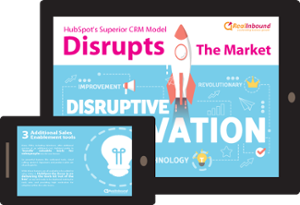When it comes to onboarding with HubSpot, there are two main options: working with a HubSpot partner or doing it yourself (DIY). Let's compare the two options.
HubSpot Partner Onboarding:
When you work with a HubSpot partner for onboarding, you get access to an experienced team of professionals who are certified by HubSpot. They have a deep understanding of the platform and can help you get started quickly and efficiently. They can also help you customise your onboarding plan based on your specific business needs.
One of the biggest advantages of working with a partner is that you get expert guidance throughout the onboarding process. This can be especially helpful if you are new to HubSpot or if you have a complex setup. Partners can help you with everything from setting up your account to integrating with other tools to creating workflows and automations.
Another advantage of working with a partner is that you get ongoing support and training. Partners can help you with any questions or issues that come up, and they can provide training to help you and your team get the most out of the platform. This can be especially helpful if you are trying to scale your business and need to train new team members on how to use HubSpot.
Of course, working with a partner does come with a cost. The price of onboarding with a partner can vary depending on the partner and the scope of work, but it can be higher than doing it yourself. However, the investment can be worth it if you want to ensure a smooth onboarding process and get the most out of the platform.
Pros:
- Expert guidance from certified partners: One of the biggest advantages of working with a HubSpot partner is that you get access to certified professionals who have a deep understanding of the platform. They can provide expert guidance and help you get started quickly and efficiently.
- Customised onboarding plan: Partners can help you create a customised onboarding plan that is tailored to your specific business needs. This can be especially helpful if you have a complex setup or if you want to get the most out of the platform.
- Ongoing support and training: Partners can provide ongoing support and training to help you and your team get the most out of the platform. This can be especially helpful if you are trying to scale your business and need to train new team members on how to use HubSpot.
- Saves time and effort: Working with a partner can save you time and effort by helping you get started quickly and efficiently. This can be especially valuable if you have a busy schedule or if you need to focus on other important tasks.
Cons:
- Higher cost than DIY: One of the biggest disadvantages of working with a partner is that it can be more expensive than doing it yourself. The cost of onboarding with a partner can vary depending on the partner and the scope of work.
- Dependence on partner for ongoing support: When you work with a partner, you become dependent on them for ongoing support and training. If you decide to switch partners or if your partner goes out of business, you may need to find a new partner or invest in additional training.
- Limited control over the onboarding process: When you work with a partner, you have less control over the onboarding process than if you were doing it yourself. You need to trust that the partner will provide expert guidance and create a customised onboarding plan that meets your specific needs.
- Potential for misaligned expectations: If your expectations are not aligned with your partner, it can lead to frustration and a less-than-ideal onboarding experience. It's important to communicate clearly with your partner and set expectations upfront to avoid any misunderstandings.
DIY Onboarding:
If you have experience with HubSpot or are willing to invest the time to learn on your own, DIY onboarding can be a cost-effective option. HubSpot provides extensive documentation, video tutorials, and a community forum to help you get started. This can be a good option if you have a small team and a limited budget.
One of the advantages of doing it yourself is that you have complete control over the onboarding process. You can set your own timeline and customise the process based on your specific needs. You also have the flexibility to learn at your own pace, which can be helpful if you have a busy schedule.
However, doing it yourself can also be time-consuming and require effort. HubSpot is a powerful platform with a lot of features, and it can take some time to learn how to use them effectively. You may need to invest significant time in reading documentation and watching tutorials, which can take away from other important tasks.
Another disadvantage of doing it yourself is that you may miss out on expert guidance. HubSpot partners have experience working with the platform and can provide customised guidance based on your specific business needs. If you are doing it yourself, you may not be aware of all the features or may miss out on important details that could impact your success.
In addition, there is a higher chance of making mistakes or missing important features if you are doing it yourself. This can result in wasted time and effort or even impact your business success. It's important to weigh the pros and cons and consider your level of experience and expertise before deciding to do it yourself.
Pros:
- Cost-effective: One of the biggest advantages of doing it yourself is that it can be more cost-effective than working with a partner. HubSpot provides extensive documentation, video tutorials, and a community forum to help you get started, and these resources are generally available for free.
- Complete control over the onboarding process: When you do it yourself, you have complete control over the onboarding process. You can set your own timeline and customise the process based on your specific needs.
- Flexibility to learn at your own pace: Doing it yourself allows you to learn at your own pace, which can be helpful if you have a busy schedule. You can invest as much or as little time as you need to get up to speed.
- Increased ownership: When you do it yourself, you have a greater sense of ownership over the process and the outcomes. This can be motivating and can lead to a deeper understanding of the platform and your business needs.
Cons:
- Time-consuming and requires effort: One of the biggest disadvantages of doing it yourself is that it can be time-consuming and require a lot of effort. HubSpot is a powerful platform with a lot of features, and it can take some time to learn how to use them effectively. You may need to invest significant time in reading documentation and watching tutorials, which can take away from other important tasks.
- Limited guidance and support: When you do it yourself, you may miss out on expert guidance and support from a certified partner. This can be especially challenging if you have a complex setup or if you are not familiar with the platform.
- Higher chance of making mistakes: There is a higher chance of making mistakes or missing important features if you are doing it yourself. This can result in wasted time and effort or even impact your business success.
- Limited resources: While HubSpot provides extensive documentation and tutorials, there may be some features or functionalities that are not covered. If you need help with a specific issue or question, you may need to invest more time and effort in finding a solution.
In conclusion
If you have the budget and want to ensure a smooth onboarding process, working with a HubSpot partner is the best option. However, if you are willing to put in the effort to learn on your own, DIY onboarding can be a cost-effective option.







